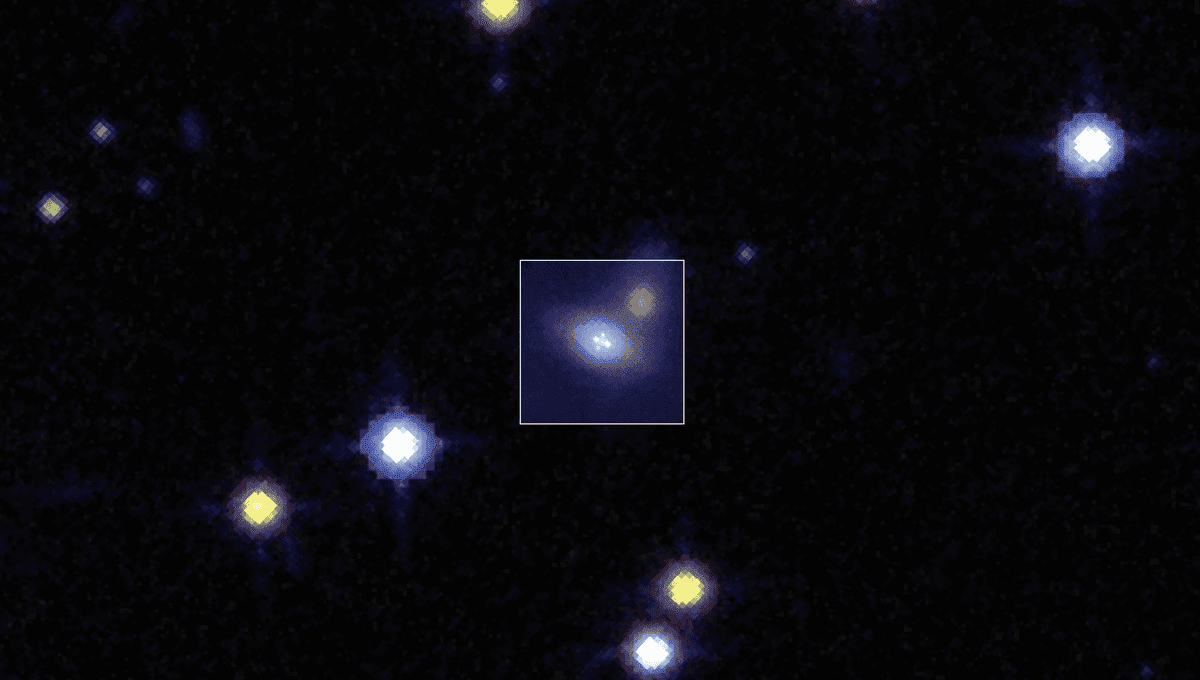
Astronomers have spotted a very distant supernova, much brighter than it ought to be given how far away it is. And they did not only see it once. They saw it four times. Don’t worry, the laws of physics have not gone haywire. It is simply that the light of this event passed near the center of a massive galaxy. The galaxy warped the light of the supernova, magnifying it and duplicating it.
The effect is known as strong gravitational lensing, something first predicted by Albert Einstein. The supernova is called SN Zwicky, taking the name of the Zwicky Transient Facility, or ZTF, from where it was first observed.
“With ZTF, we have the unique ability to catch and classify supernovae in near real time. We noticed that SN Zwicky was brighter than it should have been given its distance to us and quickly realized that we were seeing a very rare phenomenon called strong gravitational lensing,” lead author Ariel Goobar, the director of the Oskar Klein Center at the University of Stockholm in Sweden, said in a statement. “Such lensed objects can help us to uniquely probe the amount and distribution of matter at the inner core of galaxies.”
ZTF has observed 7,811 confirmed supernovae, all very important for understanding how stars die and also about the properties of the universe. But SN Zwicky is special. It is one of a handful of supernovae that have been seen thanks to gravitational lensing. That means that it is way further away than most supernovae we have observed, as its light traveled for almost four billion years. And it is also a special kind of supernova, called Type Ia (pronounced one-A).
Type Ia supernovae always have the same peak in luminosity. This makes them ideal standard candles. Knowing how luminous they ought to be, and measuring how bright they seem to you, allows you to work out the distance. A measurement of distance is crucial to understand the nature of dark energy, the unknown and hypothetical form of energy that is believed to be responsible for the accelerated expansion of the universe.
And gravitational lensing is a way to probe what galaxies are made of, including dark matter. This mysterious substance is believed to outweigh the regular matter that makes us, planets, and stars five to one. Gravitationally lensed Type Ia supernovae like SN Zwicky are a tool for studying the whole dark universe.
“Strongly lensed Type Ia supernovae allow us to see further back in time because they are magnified. Observing more of them will give us an unprecedented chance to explore the nature of dark energy,” said Joel Johansson, a postdoctoral fellow at Stockholm University and a co-author of the study.
“What are missing components needed to model the expansion history of the universe? What is the dark matter that makes up the vast majority of the mass in galaxies? As we discover more ‘SN Zwickys’ with ZTF and the upcoming Vera Rubin Observatory, we will have another tool to chip away at the mysteries of the universe and find answers,” added Goobar.
The study is published in the journal Nature Astronomy.
Source Link: Extremely Warped Supernova, Just Spotted, Will Help Us Understand The Dark Universe